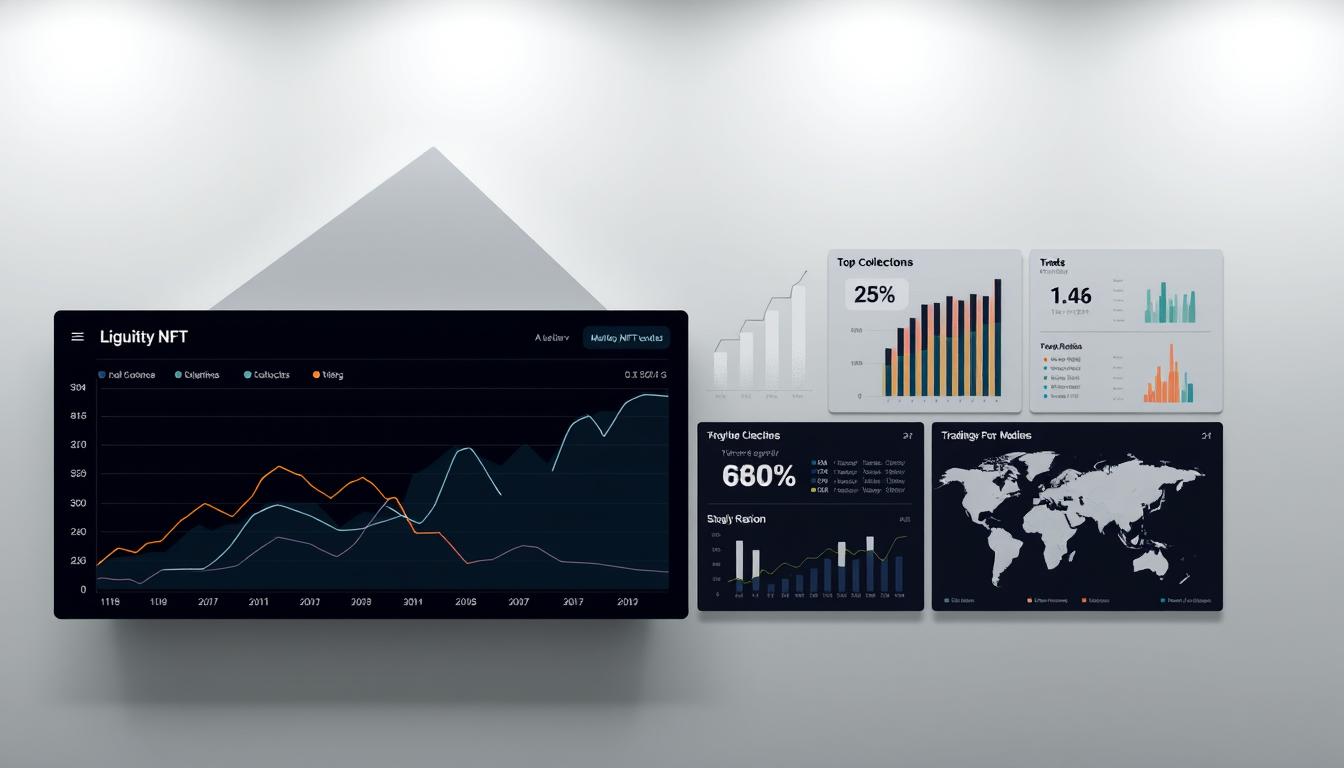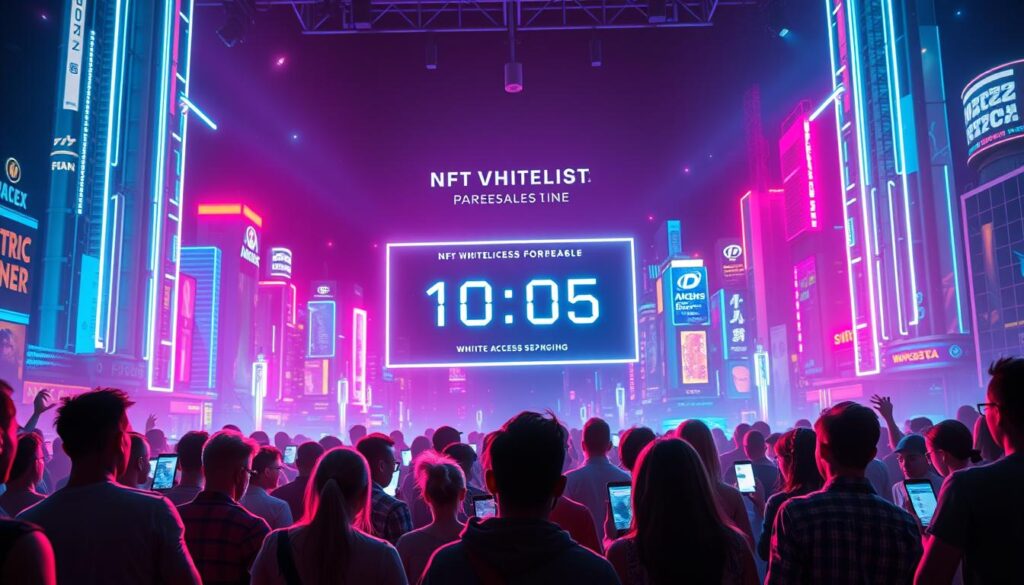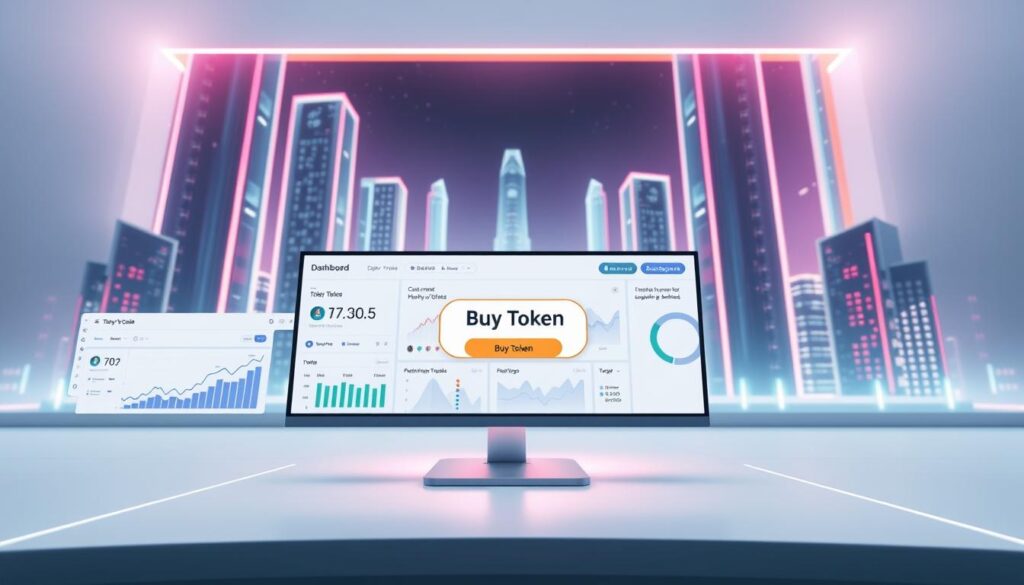Now Reading: Analysing NFT Liquidity Trading Volume Trends
- 01
Analysing NFT Liquidity Trading Volume Trends
Analysing NFT Liquidity Trading Volume Trends

The digital asset landscape continues to evolve at a remarkable pace, presenting both challenges and opportunities for participants. Understanding the flow of activity within these markets becomes essential for making informed decisions.
Market health often reveals itself through various metrics that signal investor confidence and participation levels. One crucial indicator involves examining how easily assets can be bought and sold without significant price impact.
Tracking these patterns offers valuable insights for collectors and investors navigating the digital collectibles space. Historical data combined with current developments helps paint a comprehensive picture of market behaviour.
The non-fungible token ecosystem demonstrates unique characteristics that distinguish it from traditional financial markets. By studying activity levels, stakeholders can better position themselves within this dynamic environment.
Key Takeaways
- Market activity serves as a vital indicator of health within digital asset spaces
- Understanding flow patterns helps participants make more informed decisions
- Historical data provides context for current market developments
- The digital collectibles ecosystem operates differently from traditional markets
- Tracking participation levels reveals investor confidence and interest
- Comprehensive analysis considers both quantitative and qualitative factors
- Recognising patterns helps identify opportunities in evolving landscapes
Introduction to NFT Liquidity Trading Volume Trends and Market Resurgence
Market metrics from the latter half of 2025 reveal a substantial resurgence in digital collectible transactions and engagement. This recovery demonstrates renewed energy driving activity levels upward across various platforms.
The third quarter of 2025 showed remarkable performance with sales reaching 18.1 million units. This represented a 45% increase from the previous quarter, generating significant market momentum.
| Quarter | Sales Volume (millions) | Trading Value ($ billions) | Unique Wallets (millions) |
|---|---|---|---|
| Q1 2025 | 12.5 | 1.1 | 1.66 |
| Q2 2025 | 12.5 | 1.1 | 1.85 |
| Q3 2025 | 18.1 | 1.6 | 2.14 |
Participation metrics indicate broadening adoption beyond early enthusiasts. Unique wallet addresses engaging with digital assets increased steadily throughout 2025.
Industry experts project the sector could approach $49 billion in total sales by year’s end. This suggests sustained momentum rather than temporary speculation-driven activity.
The resurgence reflects fundamental shifts in how these assets are perceived. Markets are moving beyond pure collectibility toward utility-driven applications.
Increased transaction activity correlates with improved market conditions. This creates more efficient environments for participants across diverse categories.
Historical Overview of NFT Trading and Liquidity Patterns
Historical patterns reveal a fascinating journey from explosive growth to measured maturity in digital asset markets. The initial boom period saw unprecedented engagement levels that captured worldwide attention.
December 2021 represented the absolute peak of this enthusiasm with landmark transactions setting new benchmarks. The sale of “The Merge” for $91.8 million demonstrated the extraordinary valuations possible during this phase.
By mid-2022, the market entered a significant correction phase as participation levels normalised. Trading activity contracted considerably as investors adopted more conservative approaches.
The 2023 period reflected substantial market maturation with reduced speculative behaviour. Participants increasingly focused on projects offering genuine utility rather than short-term gains.
Historical data shows clear cyclical patterns in how easily assets could be bought and sold. Periods of high engagement alternated with phases of reduced market activity across major platforms.
Understanding these historical contexts helps distinguish temporary fluctuations from structural changes. This overview establishes the baseline against which current recovery metrics can be properly assessed.
Evolution of NFT Marketplaces and Trading Platforms
Marketplace infrastructures have adapted to meet changing user demands through strategic technological advancements. These digital collectible platforms now offer sophisticated services beyond basic transaction capabilities.
The transformation reflects broader industry maturation as venues compete on user experience and integrated services. Platforms increasingly emphasise practical applications rather than simple collectibility.
Development of Multi-Chain Strategies
Leading marketplaces have embraced multi-chain approaches to overcome previous limitations. OpenSea exemplifies this evolution, expanding from a dedicated NFT marketplace to a comprehensive trading aggregator.
The platform now supports transactions across 22 different blockchain networks. This strategy provides users with greater flexibility and access to diverse digital asset ecosystems.
October 2023 performance demonstrated the success of this approach with $2.6 billion in trading volume. Notably, 90% derived from token transactions rather than traditional collectible sales.
Transformation from Speculative to Utility-Driven Models
Marketplace positioning has shifted fundamentally toward utility-driven models. Strategic initiatives like OpenSea’s token airdrop campaign successfully stimulated engagement.
This approach boosted low-value digital collectible sales by 29% in Q3 2025. The platform maintained leadership with 7.8 million visits in September 2025 despite increasing competition.
Understanding these marketplace evolution patterns helps participants navigate the changing landscape. Multi-chain strategies and utility focus represent the new competitive frontier for digital asset platforms.
Market Dynamics and Transaction Volume Insights
Market dynamics demonstrate complex relationships between trading activity and overall ecosystem stability. Recent analysis reveals how various factors interact to create observable patterns in digital asset behaviour.
Transaction metrics offer multifaceted perspectives on market health. They reveal not only total value exchanged but also frequency and concentration of activity.

Data analysis shows significant variations across different digital collectible categories. Established collections exhibit different characteristics compared to emerging projects.
Liquidity conditions show clear correlations with market maker participation. Higher activity levels generally correspond with improved price discovery mechanisms.
These insights help distinguish genuine market strength from artificial inflation. Understanding wallet participation versus concentration among few traders provides crucial context for assessment.
Transaction patterns often precede price movements, making volume analysis essential for anticipating market direction. This enables stakeholders to identify emerging opportunities more effectively.
Data-Driven Analysis: From 2021 Boom to Q3 2025 Trends
Numerical data demonstrates the cyclical nature of digital asset participation and value exchange. The journey from 2021’s explosive phase to Q3 2025’s measured recovery reveals distinct market patterns.
The 2021 period established unprecedented benchmarks for digital collectibles. Record-breaking transactions captured global attention during this speculative peak.
Subsequent years witnessed significant market contraction as enthusiasm normalised. Trading activity declined substantially across major platforms throughout 2022-2023.
Q3 2025 marked a clear turning point with 18.1 million sales representing 45% quarterly growth. This generated $1.6 billion in transaction value across diverse platforms.
Current recovery patterns differ qualitatively from previous cycles. Growth appears more evenly distributed across utility-focused projects rather than speculative collectibles.
Quantitative evidence suggests the market has established a more sustainable foundation. This data-driven perspective helps distinguish cyclical patterns from structural improvements.
Impact of Market Fluctuations on Liquidity and Trading
Fluctuating conditions in the digital collectibles space directly influence participation levels and transaction frequency. These swings create uncertainty for creators, collectors, and investors navigating the market.
Understanding how price movements affect buying and selling patterns helps participants make informed decisions. The cyclical nature of excitement followed by consolidation demonstrates how sentiment impacts activity.
Effects of Record Sales and Subsequent Slowdowns
Landmark transactions like “The Merge” at $91.8 million create temporary surges in market attention. New participants often enter seeking similar returns during these peak periods.
Existing holders reassess valuations when exceptional sales occur. This can lead to increased trading volume as positions are adjusted.

The subsequent slowdowns demonstrate clear withdrawal patterns. Early participants frequently take profits while newer entrants become more cautious about elevated valuations.
Influence of Trading Volume Volatility on Investor Confidence
Sustained high volumes generally correlate with positive sentiment among investors. Declining activity often triggers further reductions as participants adopt wait-and-see approaches.
Risk-averse investors frequently exit during high volatility periods. This concentrates activity among more speculative participants.
Understanding these patterns helps market participants develop appropriate risk management strategies. Realistic expectations about sustainability become crucial for long-term engagement.
Institutional Adoption and Its Role in NFT Growth
The entry of major financial institutions represents a fundamental shift in how digital collectibles are perceived and valued. This institutional adoption brings credibility and stability previously unseen in the space.
Major asset managers like BlackRock have driven significant capital inflows through spot Ethereum ETFs. These investments create stable underlying demand for the blockchain infrastructure supporting most digital collectible activity.
Institutional Investment and Market Stability
Corporate treasury adoption marks a qualitative change in engagement strategies. Companies including Tesla and Goldman Sachs now treat Ethereum as strategic assets rather than speculative positions.
Government participation adds another layer of legitimacy to the ecosystem. Several national governments own and stake ETH while exploring tokenisation applications.
This institutional foundation supports continued growth by providing capital infrastructure and regulatory engagement. The presence of established participants improves market stability through longer investment horizons.
Institutional adoption also drives demand for utility-focused digital assets with clear value propositions. This shifts market composition toward more sustainable projects with governance rights and traditional financial integration.
Technological Advancements Boosting NFT Trading
The underlying technology supporting digital asset transfers has undergone significant enhancements. These improvements address previous limitations that constrained market growth and accessibility for participants.

The Ethereum Dencun upgrade represents a watershed moment for digital collectible exchanges. It introduced Proto-Danksharding through EIP-4844, enabling more efficient data storage mechanisms.
Blockchain Upgrades and Layer 2 Solutions
Gas fees have plummeted by over 90% following recent network improvements. Transactions that previously cost hundreds of dollars now typically average less than one dollar.
Layer 2 scaling solutions including Arbitrum and Optimism provide substantial cost reductions. These platforms maintain Ethereum’s security while offering 90-99% savings compared to mainnet operations.
Base blockchain’s impressive performance demonstrates Layer 2 effectiveness. Coinbase’s network experienced a 70% surge in activity over 30 days, reaching $47.67 million.
These technological improvements directly enhance market fluidity. They make smaller exchanges economically viable and reduce friction that previously discouraged casual participation.
Blockchain upgrades have improved transaction speed, reliability, and user experience. This creates a more professional environment comparable to traditional financial markets.
OpenSea’s Multi-Chain Pivot and Its Market Impact
The transformation of OpenSea into a multi-chain trading hub demonstrates how leading platforms adapt to changing market demands. This strategic shift expanded the platform’s capabilities beyond its original digital collectibles focus.
OpenSea now supports transactions across 22 different blockchain networks. This multi-chain approach allows users to trade various digital assets including collectibles and cryptocurrencies.
The platform’s diversification strategy proved successful in October 2023. Trading activity reached $2.6 billion during this period, with token transactions accounting for 90% of the total.
| Period | Total Volume | Token Share | Platform Visits |
|---|---|---|---|
| October 2023 | $2.6 billion | 90% | 6.2 million |
| Q3 2025 | +29% growth | 85% | 7.8 million |
| September 2025 | Sustained activity | 82% | 7.8 million |
Strategic initiatives like the token airdrop campaign boosted engagement significantly. Sales volume increased by 29% in Q3 2025, demonstrating the effectiveness of these incentives.
OpenSea’s emphasis on self-custodial trading addresses user security concerns. The interface maintains simplicity comparable to traditional financial applications.
September 2025 traffic reached 7.8 million visits despite growing competition. This sustained engagement underscores the platform’s continued market leadership.
The multi-chain pivot sets new standards for digital asset platforms. It positions OpenSea as a comprehensive trading environment benefiting broader market dynamics.
Emerging Strategies of NFT Marketplaces and Platform Innovation
Marketplace evolution demonstrates how strategic positioning and specialised features can rapidly alter competitive balances. The landscape for digital collectibles has shifted dramatically as platforms innovate to capture user attention.
Blur’s rapid ascent to 40-45% market share highlights this transformation. Its zero-fee structure and professional tools challenge OpenSea’s historical dominance at 30-35%.
Alternative platforms employ distinct strategies to carve their niches. X2Y2 maintains 5-10% share with competitive 0.5% fees and flexible royalty options.
Rarible focuses on creator empowerment through DAO governance and multi-chain support. This approach secures its 3-5% position among specialised traders.
Platform innovation increasingly centres on trader experience enhancements. Advanced order types and portfolio analytics become standard competitive differentiators.
Specialised marketplaces emerge for gaming assets, music collectibles, and virtual real estate. These create efficient liquidity pools for niche communities.
Token economics integration represents another strategic frontier. Native tokens provide governance rights and fee discounts that incentivise sustained engagement.
This competitive environment benefits the broader ecosystem. It drives continuous improvement while reducing costs for participants across diverse platforms.
NFT Integration with DeFi and Tokenised Real-World Assets
Hybrid ownership models combining tangible assets with digital representations are gaining significant market traction. This evolution moves beyond purely digital collectibles into functional financial instruments.
Bridging Digital and Physical Asset Ownership
Courtyard’s approach exemplifies this integration by tokenising physical collectible cards. Each digital certificate represents ownership of tangible assets, creating a bridge between physical and blockchain-based markets.
Q3 2025 performance demonstrated substantial demand for these hybrid models. The platform achieved remarkable transaction metrics during this period.
| Platform | Items Sold | Transaction Value | Asset Type |
|---|---|---|---|
| Courtyard NFTs | 1.55 million | $145 million | Physical Collectibles |
| TokenWorks | Fractional Exposure | Variable | CryptoPunks |
DeFi protocols enable sophisticated automated strategies for these assets. TokenWorks’ PunkStrategy provides fractional exposure to high-value collections.
This convergence creates new mechanisms for previously illiquid assets. It attracts both retail and institutional participants seeking alternative ownership structures.
The Rise of Sports NFTs and Profile Picture (PFP) Trends
Category-specific performance data from Q3 2025 reveals significant divergence in the digital collectibles market. Distinct categories experienced vastly different fortunes, highlighting shifting participant preferences.
This analysis compares the explosive growth in sports-related assets and profile picture collections against the contraction seen in gaming-focused digital items.
Surge in Trading Volumes and Community Engagement
The sports category demonstrated remarkable momentum. Its trading activity surged by 337% to reach $71 million, while the number of sales increased by 143%.
This growth was fuelled by partnerships with major leagues and athlete endorsements. These collaborations brought mainstream audiences into the space.
Profile Picture (PFP) collections also saw powerful expansion. Their transaction value jumped 187% to $544 million in the same quarter.

Collections like CryptoPunks and Pudgy Penguins thrived due to strong community ties. Their cultural significance and limited supply create lasting appeal for collectors.
Comparative Analysis of Sports vs Gaming NFT Trends
This sports-led growth contrasts sharply with the gaming sector’s performance. Gaming digital assets saw a 17% reduction in trading value and a 32% decrease in transaction count.
The table below illustrates this stark contrast in Q3 2025 performance across the three key categories.
| Category | Trading Volume Change | Sales Change | Q3 2025 Volume |
|---|---|---|---|
| Sports Collectibles | +337% | +143% | $71 million |
| Profile Picture (PFP) | +187% | Data Not Specified | $544 million |
| Gaming Assets | -17% | -32% | Declined |
Sports and PFP assets benefit from clear utility and built-in engagement. Fantasy sports integration and social identity uses attract sustained interest.
These trends suggest a more mature market. Participants now discriminate based on a project’s genuine engagement potential rather than speculative hype.
Understanding NFT Liquidity Trading Volume Trends
The fluidity of digital asset exchanges depends on sophisticated mechanisms that balance supply and demand across platforms. Analysing these patterns requires examining multiple interconnected metrics that reveal market health.
Market fluidity encompasses several dimensions. These include immediate transaction execution capability and the price impact of larger exchanges. The depth of buy and sell orders across various price levels also plays a crucial role.
Transaction patterns serve as primary indicators of marketplace activity. However, they must be analysed alongside participant metrics and transaction distribution. This helps distinguish genuine activity from artificial inflation.
Current data reveals increasing market sophistication. Professional market makers provide continuous support, while automated strategies exploit price inefficiencies. Institutional participants contribute larger, more stable order flow.
Understanding these trends requires distinguishing between different transaction types. Organic retail activity differs significantly from professional market maker participation. Each type carries different implications for overall market health.
Temporal analysis reveals cyclical patterns in exchange activity. Certain periods consistently show elevated participation levels. Others demonstrate reduced activity across major platforms.
Sophisticated analysis incorporates on-chain information and marketplace metrics. Social sentiment indicators and cross-market correlations provide additional context. This comprehensive approach helps predict future market movements.
Forecasting Future Trends and Trading Volume Projections
Strategic shifts among major participants signal a transformative period ahead for token-based digital ownership models. Market intelligence points toward substantial expansion as adoption broadens across diverse sectors.
Industry forecasts suggest the digital collectibles space could reach hundreds of billions in total value over coming years. Specific projections indicate sales approaching $49 billion by 2025’s conclusion.
Future developments increasingly emphasise utility-focused applications rather than speculative collectibles. Successful projects will demonstrate clear value through membership benefits and intellectual property rights.
Major brand strategies reflect this evolution. Nike’s closure of its RTFKT division and Nikeland game in 2024 suggests movement toward integrated approaches.
Technological improvements through full Danksharding implementation and cross-chain interoperability will enhance infrastructure. Regulatory clarity should facilitate institutional investment by establishing clear frameworks.
Volume projections depend on multiple variables including macroeconomic conditions and utility-focused project success. The market appears poised for sustainable growth beyond temporary fluctuations.
Regulatory and Market Risk Considerations in NFT Trading
Navigating the digital collectibles space requires careful attention to regulatory frameworks and market uncertainties. Participants face complex challenges that demand thorough understanding and strategic planning.
Compliance Challenges and Regulatory Frameworks
Global regulations continue evolving to address digital asset markets. Europe’s Markets in Crypto-Assets Regulation (MiCAR) provides clearer guidelines for marketplace operations.
US regulations are developing similar frameworks for consumer protections. Tax authorities worldwide have created specific guidance for transaction reporting.
Security risks remain substantial for collectors and investors. Most users encounter scams including rug pulls and counterfeit collections.
Risk Management Strategies for Investors
Effective strategies help mitigate potential losses in volatile markets. Portfolio diversification across different collections reduces concentration risk.
Thorough due diligence on project teams and smart contracts is essential. Secure wallet practices protect against technological vulnerabilities.
Market volatility creates significant price uncertainty. Values can decline rapidly during periods of market volatility.
| Risk Type | Impact Level | Management Strategy |
|---|---|---|
| Regulatory Compliance | High | International framework monitoring |
| Security Threats | Very High | Multi-signature wallets |
| Liquidity Constraints | Medium-High | Blue-chip collection focus |
| Price Volatility | High | Position sizing alignment |
Investors must balance potential returns against multiple risk dimensions. Realistic expectations about valuation challenges help maintain perspective.
Leveraging Innovative Trading Tools and Analytical Data
The evolution of decision-making tools represents a significant advancement in how collectors approach asset evaluation. Modern participants increasingly rely on sophisticated platforms that transform complex information into actionable intelligence.
Utilising Data Visualisations and Charting Techniques
Contemporary platforms provide comprehensive visualisations that make market dynamics accessible. Real-time charts display historical patterns and current movements with remarkable clarity.
Advanced charting techniques borrowed from traditional finance help identify key levels. Support and resistance markers become visible through volume pattern analysis.
Professional-grade tools offer specialised features for efficient portfolio management. Bulk listing capabilities and multi-wallet tracking consolidate holdings across platforms.
Rarity analysis provides essential context for valuation decisions. These tools calculate trait distributions and statistical scores within collections.
Wallet tracking capabilities enable monitoring of historically successful patterns. This provides early signals of emerging interest in specific digital assets.
Market sentiment indicators aggregate social activity and transaction metrics. They help distinguish genuine momentum from artificial promotion cycles.
Data-driven approaches substantially improve outcomes by reducing emotional decisions. They provide objective frameworks for navigating complex digital collectible landscapes.
Conclusion
Looking across the digital asset landscape, the maturation of non-fungible token ecosystems signals sustainable growth ahead. The comprehensive analysis reveals a market that has successfully navigated volatility to establish lasting foundations.
Key trends demonstrate a shift from speculative origins toward utility-driven applications. This evolution positions the space for continued development rather than being dismissed as a passing phase.
Understanding market dynamics helps participants make informed decisions. Successful engagement requires balancing opportunity with appropriate risk management strategies.
The future remains promising for digital assets as technological barriers diminish. Buyers who focus on fundamentals rather than speculation will benefit most from ongoing market development.
FAQ
What is the current state of the digital collectibles market?
The market for digital assets has shown significant signs of resurgence after a period of correction. Recent data indicates a notable increase in transaction activity and overall engagement, driven by factors such as institutional interest and technological improvements on various blockchains.
How have major platforms like OpenSea influenced the asset space?
Platforms such as OpenSea have had a profound impact by adopting multi-chain strategies. This evolution allows buyers and sellers to engage across different networks, increasing accessibility and fostering growth within the entire ecosystem for these unique items.
What role does utility play in the value of these assets today?
There is a clear transformation from purely speculative models to those driven by practical utility. Assets that offer real-world use cases, such as access to exclusive events or integration with decentralised finance (DeFi) applications, are demonstrating more sustained value and investor interest.
Are sports-related digital collectibles a good investment?
Sports-themed items have seen a remarkable surge in sales and community engagement. However, like any investment in this space, they carry inherent risk. Their value is often tied to athlete performance and brand partnerships, making thorough research and understanding of marketplaces essential.
How can investors manage risk when participating in this market?
Effective risk management involves several strategies. Investors should diversify their holdings, utilise analytical tools to track price movements and transaction data, and stay informed about evolving regulatory frameworks that could affect the entire sector.
What technological advancements are improving the trading experience?
Key advancements include blockchain upgrades and the implementation of Layer 2 solutions. These technologies help reduce transaction costs and increase processing speeds, making the purchase and sale of digital art and collectibles more efficient for all participants.














